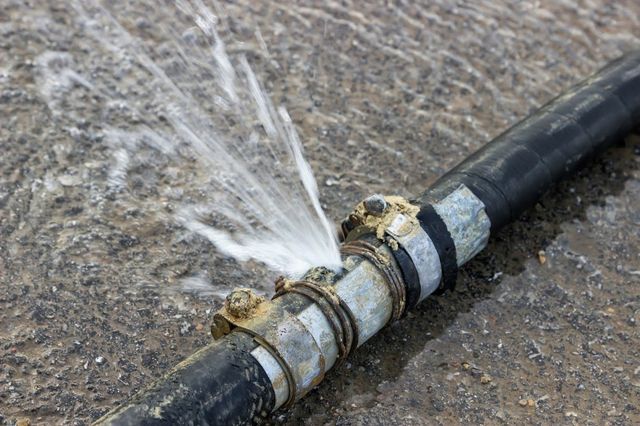Just how do you feel with regards to What to Know Before Installing a Dishwasher?

A ruptured pipeline is a significant emergency; you can only stand as you watch water you pay dearly to reunite with the planet. In worse cases, you discover a pool on your kitchen area floor, which is a terrific journey danger, particularly if you have kids around. If the pipe that burst was in your walls, problem: you may need to repaint that entire section.
How can a calamity like a ruptured pipe be avoided and managed? Well, by listening to your specialist emergency plumbing professionals and also complying with these guidelines.
How do I understand when my pipes have burst?
Rising and fall water stress
Pipelines do not just burst in a day. You may have seen that your cooking area tap or shower doesn't run quickly when you transform the faucet. It may stop for a couple of secs and after that blast you with more pressure than typical.
In various other instances, the water may appear regular initially, after that decrease in stress after a couple of secs.
Wet walls and water stains
Before a pipe ruptureds, it will certainly leakage, the majority of times. If this consistent leaking goes unnoticed, the leak might finish into a broad gash in your pipeline. One simple method to avoid this emergency is to watch out for wet wall surfaces advertisement water spots. These water stains will certainly lead you right to the leakage.
Puddles under pipes and sinks
When a pipe bursts, the outflow creates a pool. It may appear that the pool is expanding in size, and despite the amount of times you wipe the pool, in a couple of minutes, there's another one waiting to be cleansed. Typically, you might not have the ability to trace the pool to any kind of visible pipelines. This is an indicator to call an expert plumber.
Untraceable trickling noises
Pipeline ruptureds can take place in the most unpleasant areas, like within concrete, inside walls, or under sinks. When your house goes quiet, you may have the ability to hear an aggravatingly consistent dripping sound. Even after you have actually checked your shower head and also kitchen area tap, the leaking may proceed.
Dear viewers, the dripping might be coming from a pipeline inside your wall surfaces. There isn't much you can do about that, other than tell a specialist plumber.
Turn off the Water
When water ices up, it broadens in volume by concerning 9 percent. And it increases with remarkable pressure: The pressure inside pipes might go from 40 pounds per square inch to 40,000 psi! No pipeline can hold that much pressure, so it bursts. The break might happen where the ice kinds, however regularly, it occurs where water stress finds a vulnerable point in the pipeline. That may be inches and even feet from the icy area. Locate the water shutoff valve and turn off the water to avoid even more damages. You could also need to turn off the electrical energy as well, depending upon where the leakages takes place as well as just how large it is.
Contaminated water
Many individuals assume a burst pipe is a one-way electrical outlet. Fairly the contrary. As water spurts of the hole or gash in your plumbing system, pollutants discover their method.
Your water might be polluted from the resource, so if you can, examine if your water tank has any type of troubles. Nonetheless, if your drinking water is supplied as well as detoxified by the city government, you ought to call your plumber promptly if you see or scent anything amusing in your water.
What do I do when I spot a burst pipe?
Your water meter will certainly remain to run also while your water wastes. To minimize your losses, find the primary controls as well as transform the supply off. The water pipe are an above-ground framework at the edge of your residential property.
How to Fix & Detect a Leaking Pipe
How Do I Know if a Pipe is Leaking?
Leak detection tests can help you determine if your pipe has a leak. Even if you don’t see an apparent leak, you should still conduct leak detection tests regularly to save water and money—and prevent major damage to your home.
Water meter. It can be helpful to figure out what your usual water meter usage numbers are and then monitor them regularly. To monitor your meter, first, turn off all water faucets in your home. Check the meter and write down the numbers. In a few hours, check the meter again. If the numbers have changed, you have a leak. Water gauge. Use a water gauge to test your water pressure. Your showerhead should produce a certain amount of water pressure based on its model and design. If the pressure is lower than it is supposed to be for that specific showerhead, your home likely has a leak. Puddles. Look inside your bathroom, laundry, and kitchen sink cabinets. Puddles around the cabinets or around toilets, tubs, showers, and washing machines indicate the presence of a leaking pipe. You may also notice loose tiles, peeling or flaking paint, or mold caused by water accumulation. Napkin test. Even if you don’t see any puddles, you may still have a leak. You can test for water leaks in the bathroom, laundry, and kitchen by wiping below-sink connections with a napkin, paper towel, or piece of toilet paper. If it becomes damp, you probably have a leaking pipe under the sink. Discolored walls. Walls that are discolored—usually with brown or yellow stains—or bulging might mean that they have been impacted by water damage caused by a leaking pipe. Smell. A leaky pipe will create sitting water, and over time, that water may develop a musty smell. If your home smells musty, but you can’t locate the source, it may be due to a leak. Steps for Fixing a Leaking Pipe
A leaky drain can be remedied by tightening the pipe base, replacing the drain seal, caulking the rim, and tightening the pipe nut. Similarly, a leaking toilet pipe can be treated by tightening the packing nut. You may also need to replace the valve. A leaky faucet may just need tightening or replacement of the washers. If that doesn’t work, consider replacing your faucet. If your pipe has a hole in it, you may want to use a pipe leak sealer or pipe leak tape. This quick fix for water pipe leaks can also temporarily fix a copper pipe leak. https://www.ahs.com/home-matters/quick-tips/how-to-tell-if-pipes-are-leaking/

I came across that piece about How to Prepare for Your Dishwasher Installation when doing a lookup on the internet. Sharing is good. One never knows, you might be helping someone out. Thanks so much for taking the time to read it.
Schedule Appointment Now